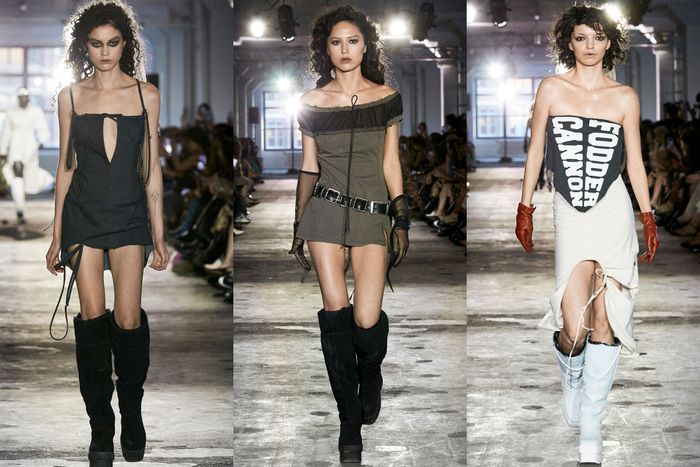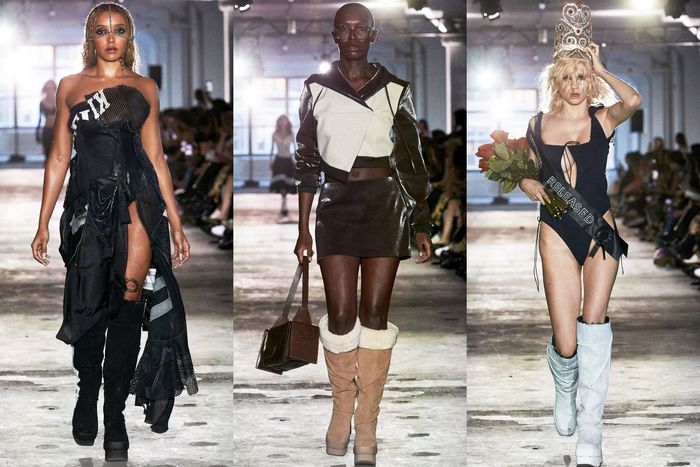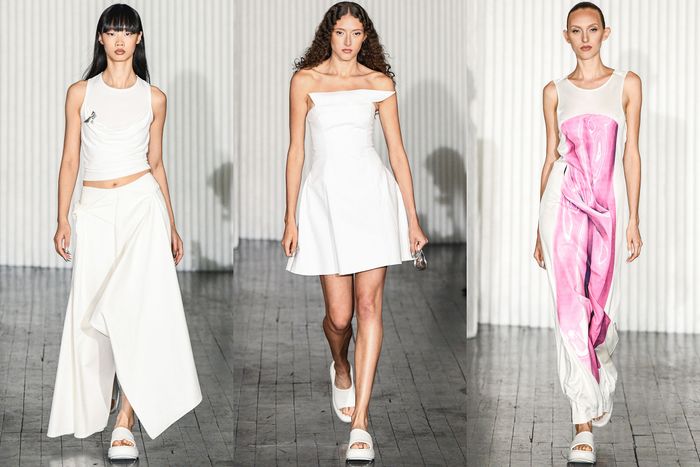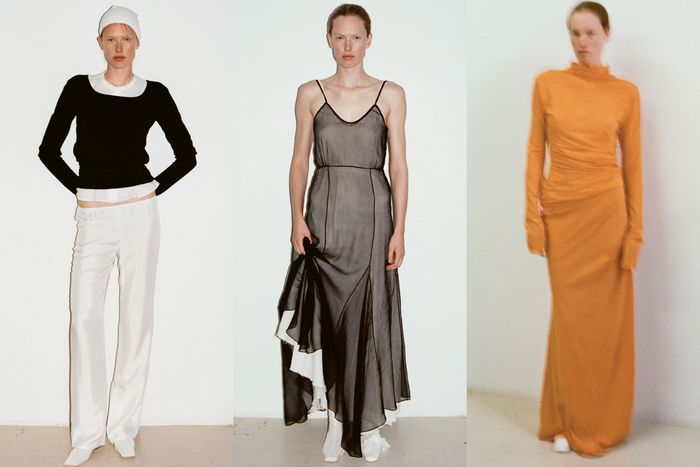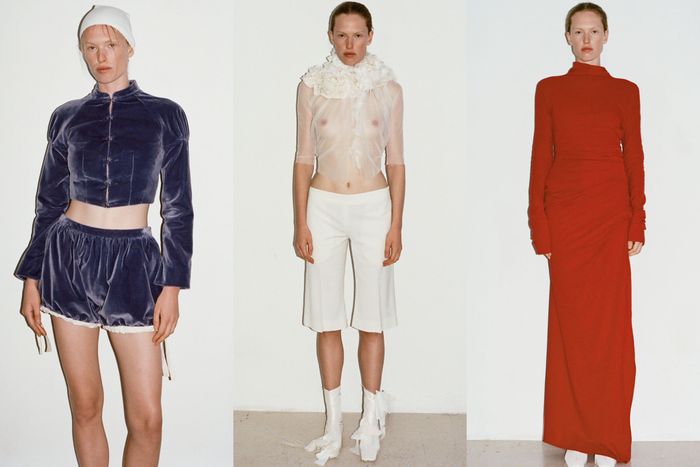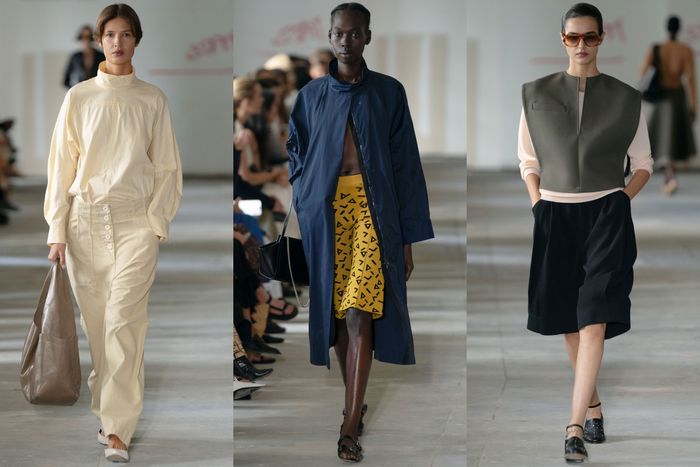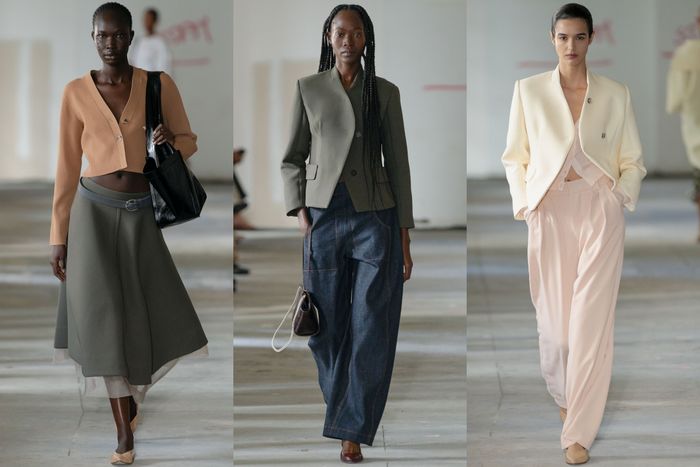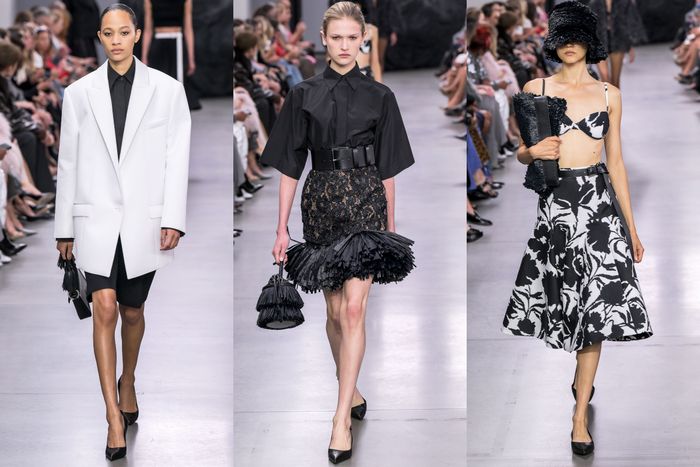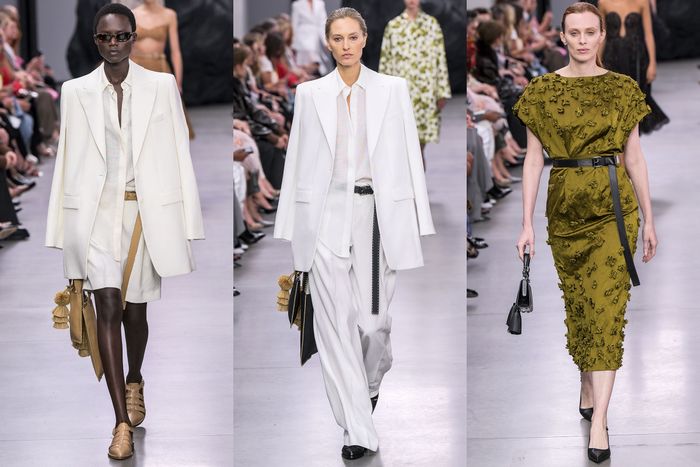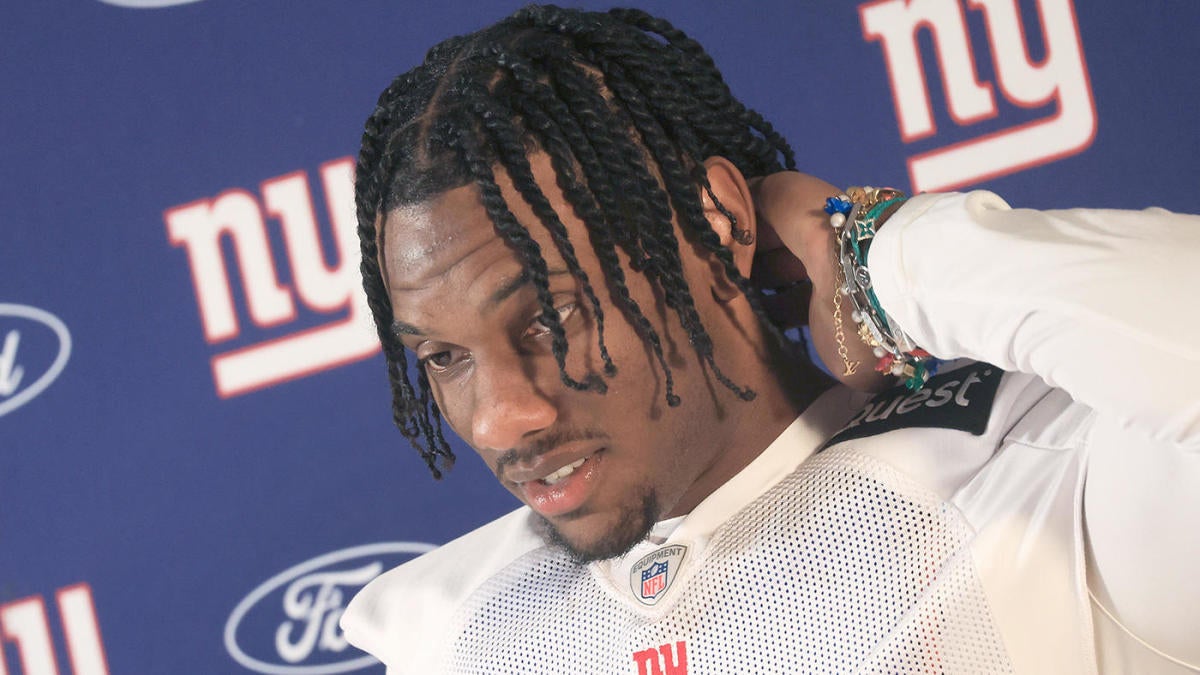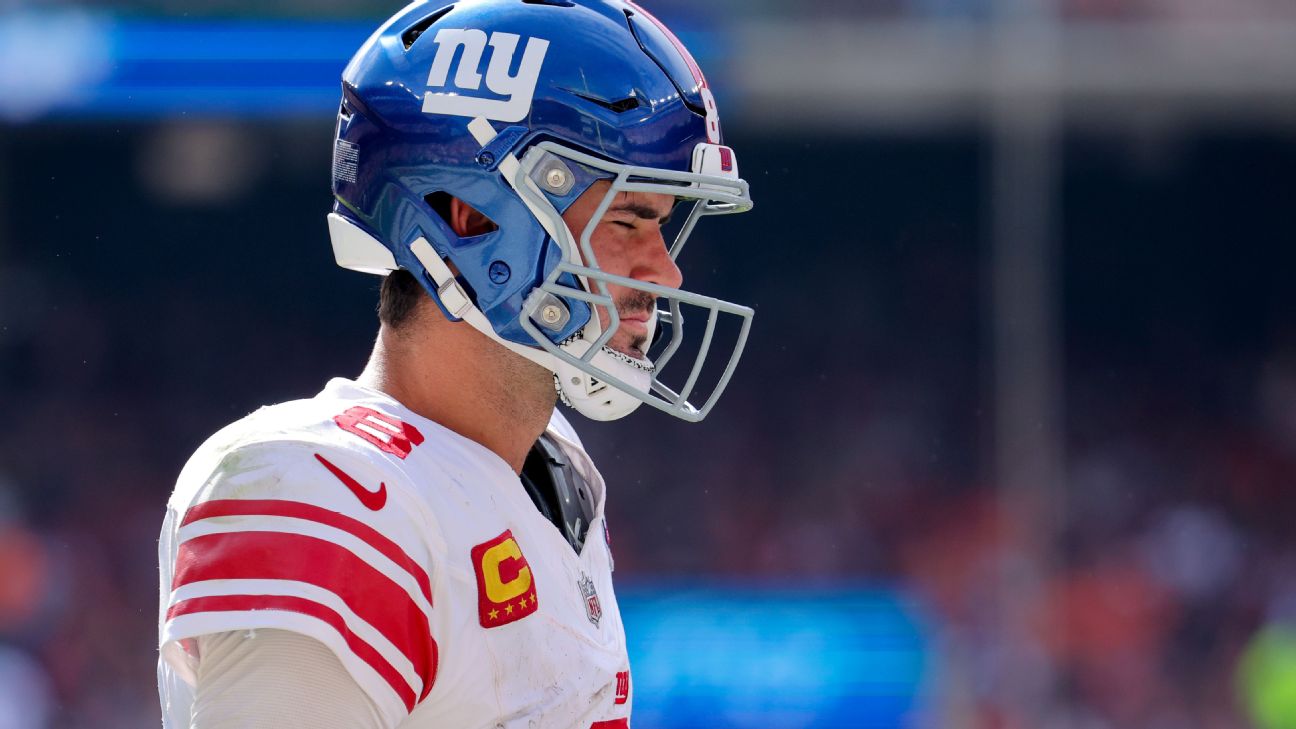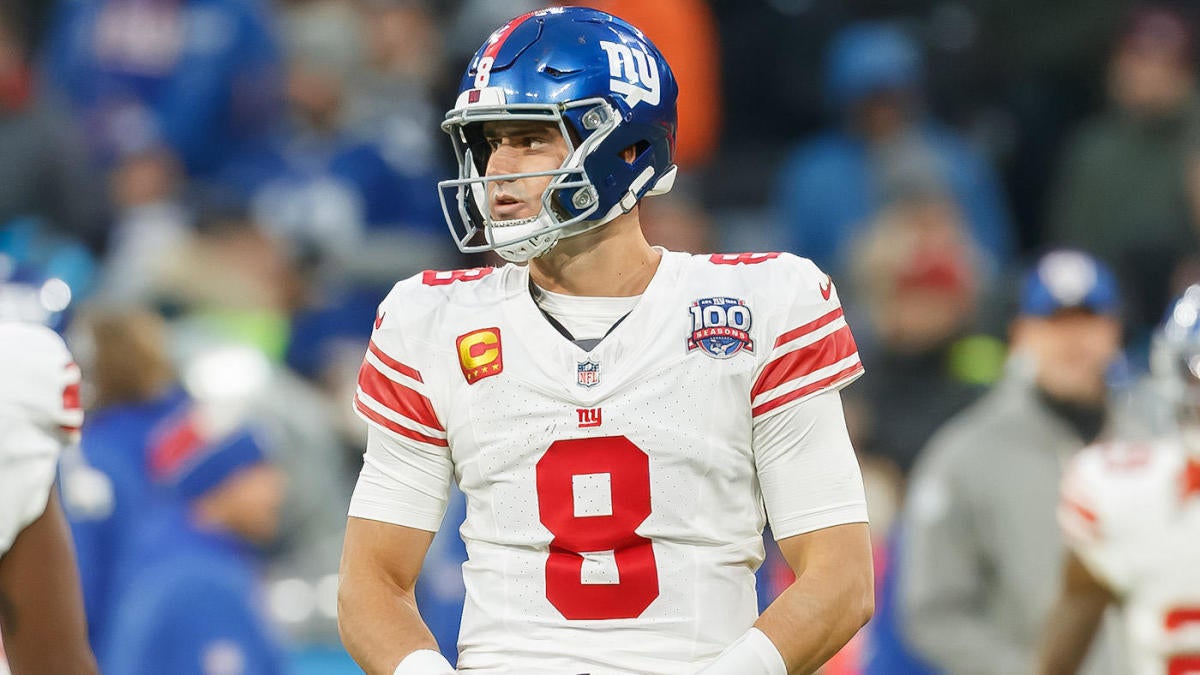Fashion
Elena Velez Offers A Threadbare View
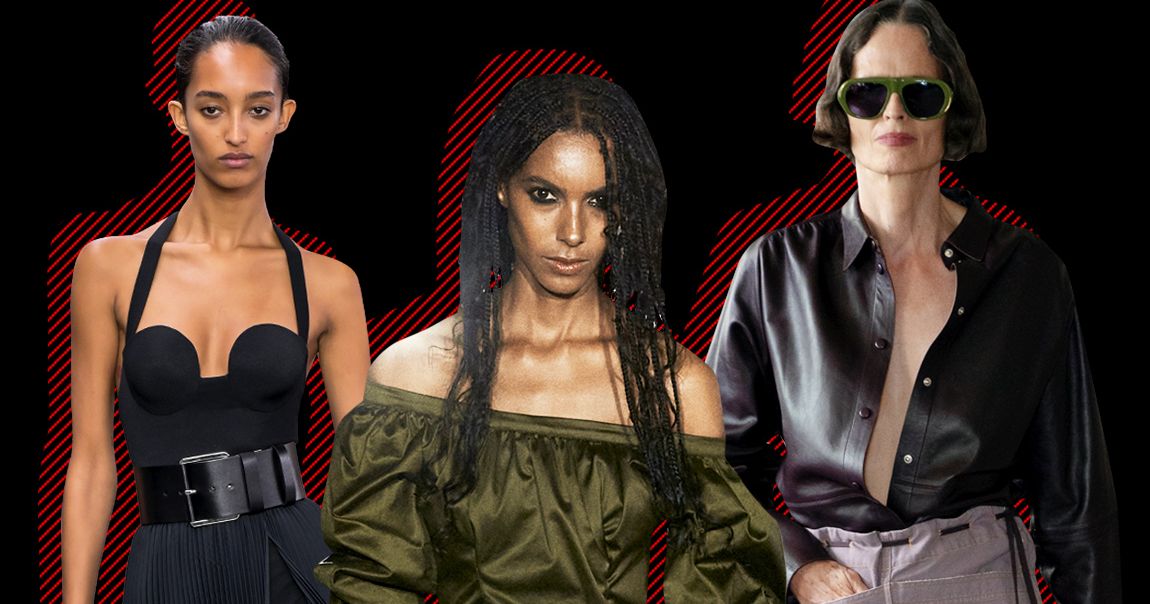
Photo-Illustration: by The Cut; Photos: Getty Images, Courtesy of Elena Velez, Courtesy of Rachel Comey
Last season, Elena Velez took over a Fifth Avenue mansion and held her idea of a dress-up party and a literary salon, though the topic, “Gone With the Wind,” is hardly anyone’s idea of great literature. Velez likes to provoke and, equally, likes to insist she has been misunderstood.
A year ago, she staged a show in an old Bushwick factory that ended in a planned mud fight. Velez argued that the depictions of women in popular culture leave “no room for the nuance and multiplicity we deserve as architects of labyrinthine interior lives.” But tell that to the director Jane Campion, or the actress Sandra Huller, or the novelist Annie Ernaux. Velez often seems to think she is the only one with these feelings. Still, I admired her spirit and her dirty fashion. And I thought the images of the girls in the mud were rather beautiful.
On Tuesday evening, in a raw office space in SoHo, Velez presented, for her, a conventional runway show. Some of the first models came out in cowboy/biker leather, big hats, western-style boots (courtesy of Uggs, a show sponsor), or a black square-dancing skirt with a clingy white top. A blonde woman, wearing a rhinestone crown and a beauty pageant sash over her black bodysuit, confirmed that Velez was mining symbols of female strength and identity. They included not only Calamity Jane and generic beauty queens but also the martyr Joan of Arc.
As Velez’s press notes gushed, “EV is the ark for disruptive and female icons, who’s [sic] reluctance to conform to the sensitivities of polite society give her a singular punk perspective.”
There is nothing punk, or anyway new, about Velez’s perspective. Most of these styles belong to a long British fashion story, like dresses with vaguely Victorian bodices and hiked-up skirts or mini dresses with low necklines that evoked vintage lingerie. I think of Vivienne Westwood, John Galliano and Lee McQueen. Their original ways of cutting clothes — literally, cutting into historical costume — and designing for the female body and attitudes of the 1980s and 90s remain the default setting for young, would-be iconoclasts in 2024.
Yet, Velez had ideas of her own at the beginning of her career, ideas grounded in her background in the industrial Midwest. Some of those ideas were difficult, to be sure, and rather makeshift, but they also had a sense of honesty and integrity. Velez may have come to the realization that the fashion industry doesn’t grant young designers time to develop their strange ideas — as it once did for Rick Owens, say, or Martin Margiela, who still struggled to make money despite his enormous influence. But I also wonder if Velez hit a wall with her creative expression and got sidetracked. The rhetoric of identity and “transformative” style isn’t enough. It strikes me as an obstacle for this generation of talent.
And how do we know this? Because very little emotion comes out of their presentations. It’s all talk and no hat, as the saying goes. Velez used to get emotion out of her shows. She did it at the mud fest. And she did it before that with an intense and furious rampage of models. Last night, it would have helped if the models had made contact with the audience — that is, get in our faces instead of parading past at a distance. But the real problem was the design and those symbolic heroines. Joan of Arc has been to the fashion rodeo once too often.
Kate Barton is another young designer and she put on her first show on Tuesday. A graduate of the Savannah College of Art and Design, Barton initially came to the attention of some writers and influencers because of her evening dresses molded and draped in highly technical fabrics with the sheen of car paint, materials she developed. They appeared in her debut show but Barton has expanded into more marketable ready-to-wear pieces, including tailored pants and some good-looking long T-shirt dresses with an abstract print consistent with her tech aesthetic and cool palette.
Kate Barton
Photo: Joe Schildhorn BFA/Courtesy of Kate Barton
Kate Barton
Photo: Joe Schildhorn BFA/Courtesy of Kate Barton
Consistency matters, dull as that sounds. In just two seasons, Colleen Allen, a native of Chicago and a former menswear designer at The Row, has laid down a wonderfully and weirdly introspective style. You can’t quite put your finger on why her spare dresses in washed cotton voile or gathered jersey do that. A highlight of her latest collection (just 20 outfits, presented in a scruffy loft in Chinatown) is a slim maxi dress with a soft high neck and long sleeves in a peachy orange. (She used a deeper shade in her first collection. “I’m obsessed with orange,” she says.) The cotton jersey spills in natural folds over the body. Allen also made pieces in orange or smokey gray velvet, like gym shorts, a kind of looped, plush stole, and a snug jacket.
Colleen Allen
Photo: Photographed by Annie Powers and styled by Clare Byrne
Photo: Photographed by Annie Powers and styled by Clare Byrne
And you can see a trace of Victorian fashion in her clothes, notably a long dress in white cotton voile with crushed and broken ruffles and a slit up the back. I mentioned that McQueen also turned to the Victorians for ideas. Allen said, “The 90s McQueen is what made me want to do fashion. That idea of femininity was one of the ones that I related to early on. It wasn’t precious and fragile.”
Not for the first time, the New York shows made clear how essential it is to have a compelling image of a woman (or a lifestyle) and nurture it while remaining open to the shifts of taste and human habit.
I loved watching Rachel Comey’s show, how her models seemed to inhabit her offbeat shapes — for example, a kind of artisan’s smock in the palest yellow cotton tucked into her flattering wide-leg jeans. Or her relaxed version of a suit: a loose, lapel-less navy jacket closed over a floaty mid-calf skirt in the same fabric and worn with sandals. Comey also offered a pair of terrific classic raincoats—slouchy and crumpled, in navy or tan.
She knows her customer, who is generally a working person with a family. (To that end, Comey designed her new line of Italian leather bags with subtle “tool” pockets.) But she rarely gives them the same thing every year.
In a way, that was the problem at Michael Kors. He showed at The Shed, with faux black boulders placed around the cold, impersonal space — an odd choice of venue given that his theme was “Mediterranean Romance.” The sleek glamour of Italy in the 1950s and early 60s. Of course, it’s hard to compare the Kors company to most other New York fashion labels. It does about $3.5 billion a year in business, according to testimony in the ongoing Tapestry trial in Manhattan. (In April, the Federal Trade Commission sued Tapestry, which owns Coach, to halt the $8.5 billion deal to buy Capri Holdings, which includes Michael Kors.)
Michael Kors
Photo: Getty Images
Micheal Kors
Photo: Getty Images
Michael Kors
Photo: Getty Images
Nonetheless, the dressy collection on Tuesday felt familiar, on autopilot. There was nothing wrong with the quality, and the accessories — the low-heeled, sling-back shoes, the neat structured purses and other bags with dense fringe—were terrific, but the clothing design needed a bit more novelty and surprise. A Kors show almost always leaves you with a ridiculous emotional uplift, and that, too, was missing.

